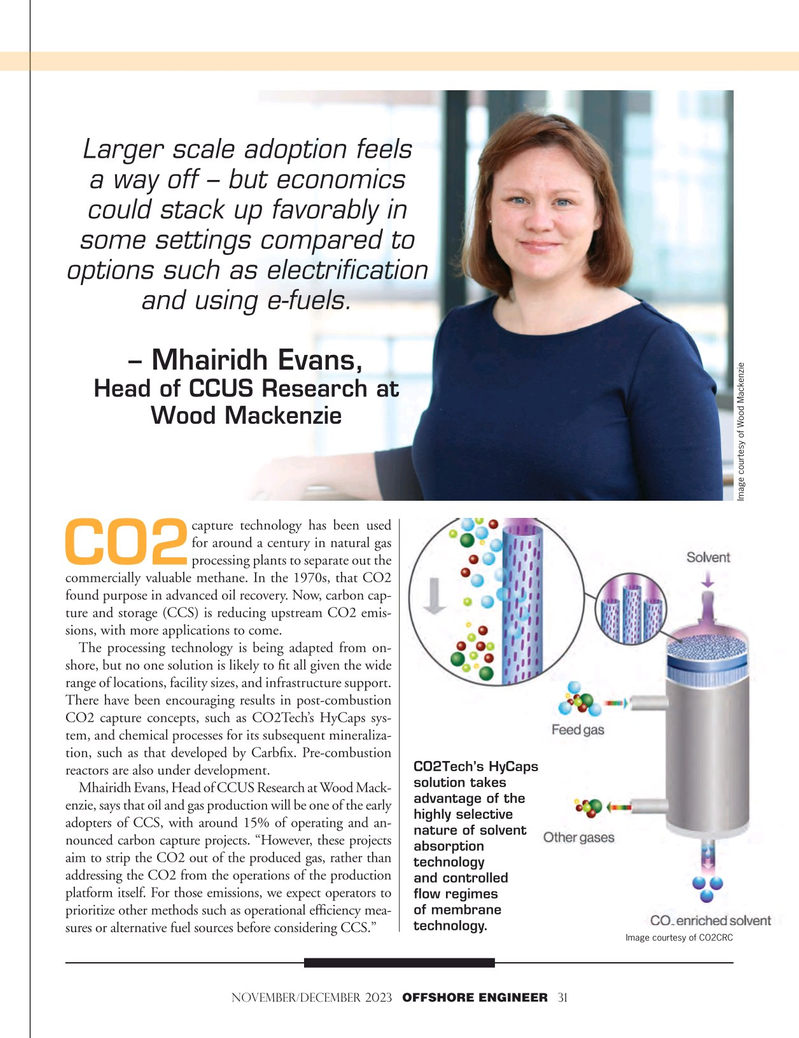
Page 31: of Offshore Engineer Magazine (Nov/Dec 2023)
Read this page in Pdf, Flash or Html5 edition of Nov/Dec 2023 Offshore Engineer Magazine
Larger scale adoption feels a way off – but economics could stack up favorably in some settings compared to options such as electrification and using e-fuels.
– Mhairidh Evans,
Head of CCUS Research at
Wood Mackenzie
Image courtesy of Wood Mackenzie capture technology has been used for around a century in natural gas
CO2 processing plants to separate out the commercially valuable methane. In the 1970s, that CO2 found purpose in advanced oil recovery. Now, carbon cap- ture and storage (CCS) is reducing upstream CO2 emis- sions, with more applications to come.
The processing technology is being adapted from on- shore, but no one solution is likely to ft all given the wide range of locations, facility sizes, and infrastructure support.
There have been encouraging results in post-combustion
CO2 capture concepts, such as CO2Tech’s HyCaps sys- tem, and chemical processes for its subsequent mineraliza- tion, such as that developed by Carbfx. Pre-combustion
CO2Tech’s HyCaps reactors are also under development.
solution takes
Mhairidh Evans, Head of CCUS Research at Wood Mack- advantage of the enzie, says that oil and gas production will be one of the early highly selective adopters of CCS, with around 15% of operating and an- nature of solvent nounced carbon capture projects. “However, these projects absorption aim to strip the CO2 out of the produced gas, rather than technology addressing the CO2 from the operations of the production and controlled platform itself. For those emissions, we expect operators to flow regimes of membrane prioritize other methods such as operational effciency mea- technology. sures or alternative fuel sources before considering CCS.”
Image courtesy of CO2CRC november/december 2023 OFFSHORE ENGINEER 31

 30
30

 32
32